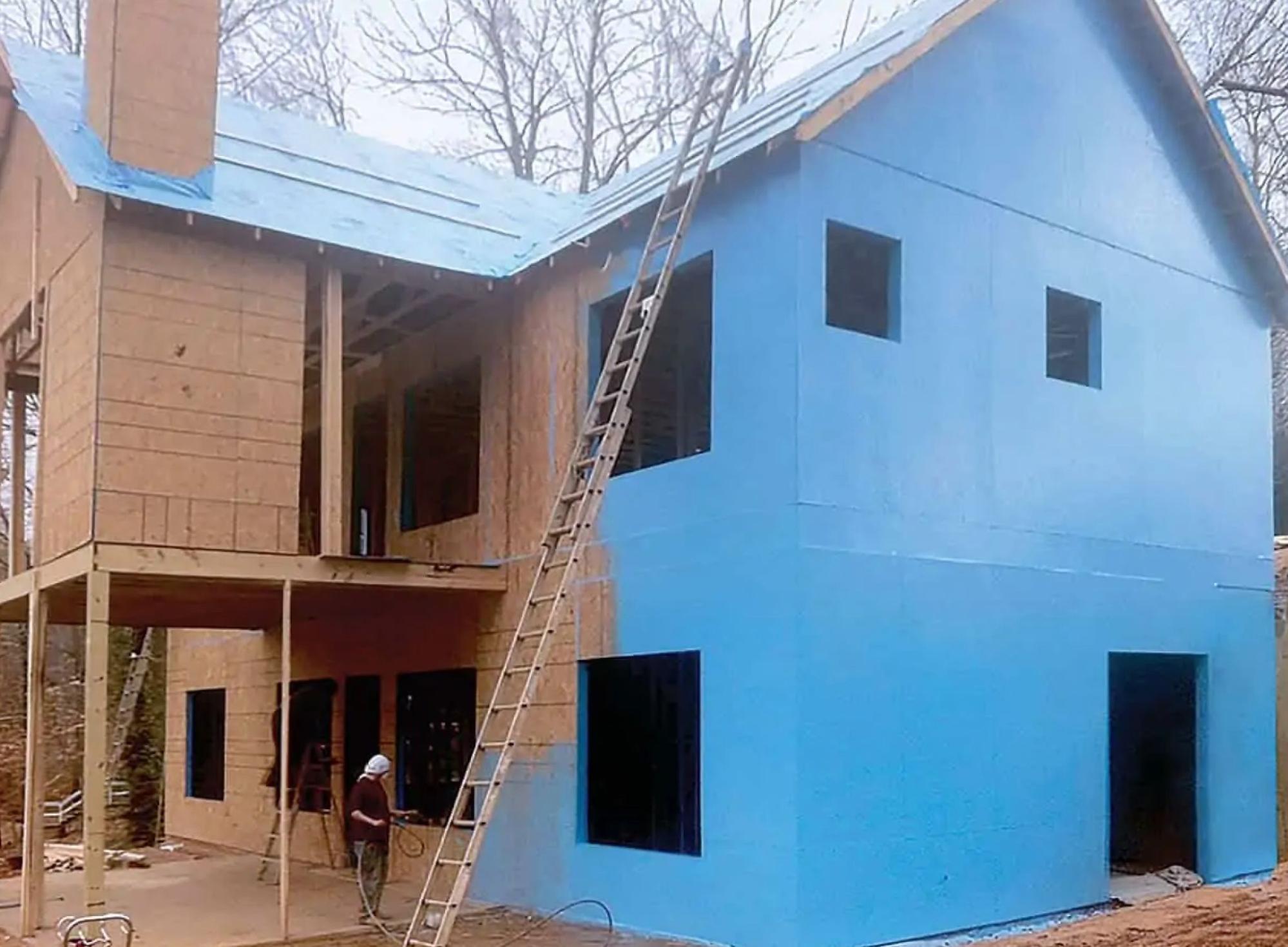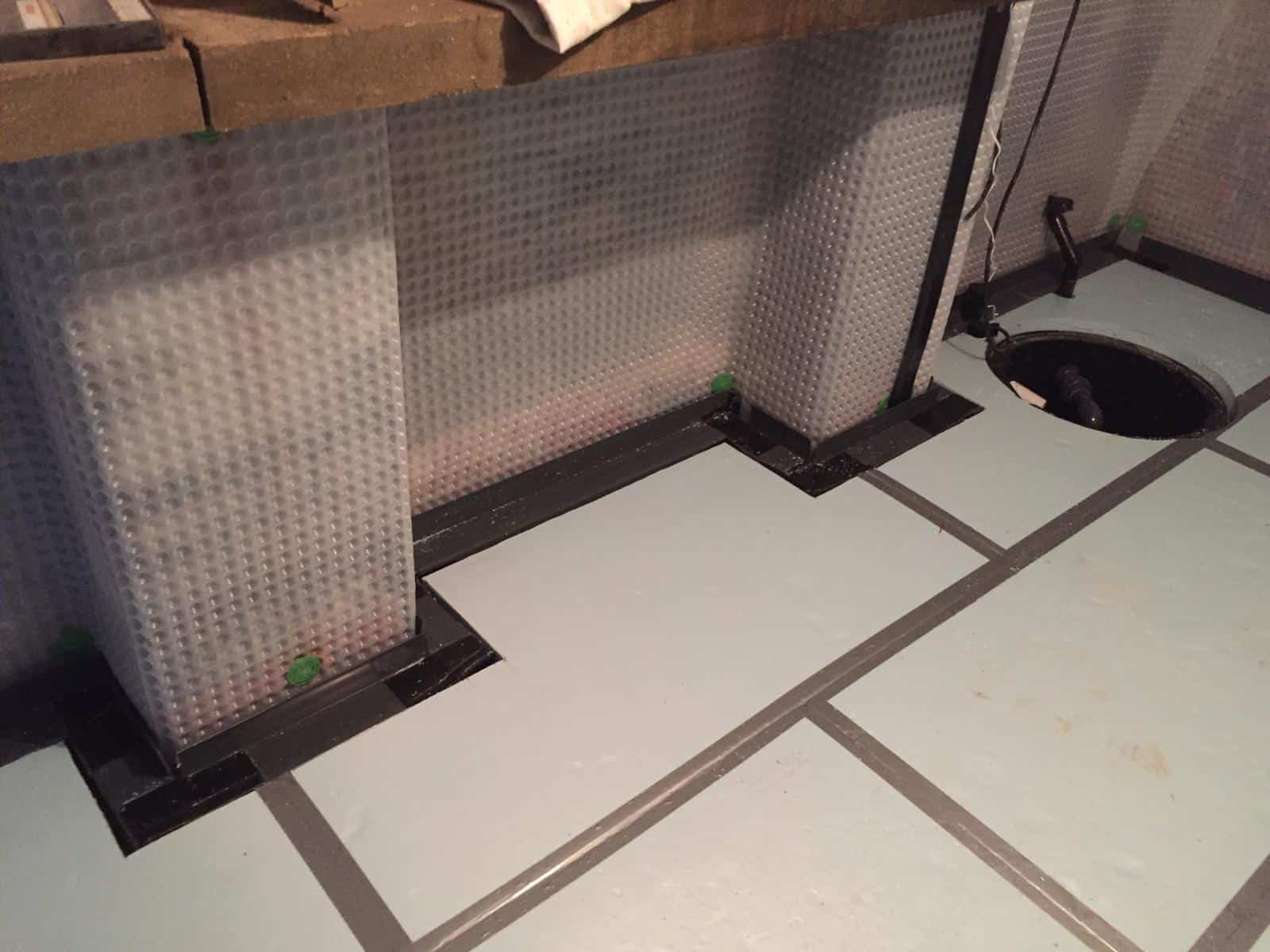Recognizing the Value of Damp Proofing in Fighting Structural Damages
Wet proofing offers as an important protection against dampness infiltration in structures. This protective measure can avoid significant structural damage, yet lots of building proprietors remain not aware of its value. Recognizing the signs of moisture and understanding the various solutions readily available can be essential. Ignoring damp proofing can lead to severe consequences. What are the details dangers and options that residential or commercial property owners should consider?
What Is Damp Proofing and How Does It Work?
Damp proofing acts as an important obstacle against wetness breach in buildings. damp specialist newcastle. This procedure entails applying particular materials and strategies to avoid water from permeating walls, floors, and various other structural aspects. Generally, wet proofing can be accomplished with the installation of moist proof membrane layers, coatings, or making use of specialized sealants.These techniques work by creating a protective layer that hinders dampness motion, ensuring that the interior setting continues to be healthy and balanced and completely dry. Damp proofing is specifically essential in locations vulnerable to high moisture or groundwater, as it helps keep the stability of the structure over time.Moreover, efficient wet proofing adds to energy efficiency by preventing warm loss connected with moist settings. By attending to potential dampness concerns prior to they rise, damp proofing acts as a positive step in guarding structures from the damaging effects of water damage, eventually lengthening their life expectancy and keeping their value
Usual Indications of Moisture in a Structure
Wetness issues within a building can materialize with several obvious indicators that show the presence of dampness. One prominent indicator is the appearance of water stains on ceilings or wall surfaces, which frequently shows dampness infiltration. Furthermore, bubbling or peeling paint can recommend that excess humidity is caught beneath the surface, resulting in wear and tear. An additional common indication is the presence of mold and mildew, which grow in moist problems and can usually be determined by their moldy odor. Additionally, a rise in humidity degrees can create condensation on home windows and various other surfaces, highlighting dampness issues. Irregular or warped floor covering might indicate underlying dampness that endangers architectural integrity. Recognizing these indications early can help minimize potential damage and keep a safe living setting. Regular inspections and timely activity are important in resolving dampness issues prior to they rise.
The Risks of Overlooking Damp Proofing
Neglecting damp proofing can cause substantial hazards to a building's structural honesty, as dampness accumulation may weaken wall surfaces and foundations. Additionally, prolonged wetness develops a setting favorable to mold and mildew growth, posing serious health risks to residents. Attending to these risks is vital for making sure both safety and security and long life of the home.
Architectural Stability Threats
When homeowners neglect the significance of effective moist proofing, they subject their buildings to significant structural integrity threats. Extended dampness infiltration can bring about the development of mold and mildew, which weakens fundamental elements and can jeopardize overall stability. In addition, excess dampness can wear down concrete and brickwork, resulting in cracks and structural failures. Wood elements are especially susceptible; they can rot and lose load-bearing capability, posing major risks to the structure's framework. In addition, neglected moist conditions might bring in parasites, such as termites, which even more intensify structural deterioration. Ultimately, disregarding damp proofing procedures can lead to costly repairs and prospective security threats, highlighting the essential function of aggressive damp administration in preserving the integrity of houses.
Carcinogen Concerns
Exactly how can a relatively minor oversight bring about significant health dangers? Overlooking wet proofing can produce a setting for mold and mildew development, which postures significant wellness hazards. Mold and mildew spores can activate allergies, respiratory problems, and various other wellness difficulties, especially in at risk populations such as youngsters, the senior, and individuals with pre-existing conditions. In addition, relentless dampness can draw in pests like rats and pests, which bring conditions that additionally compromise health. The existence of wetness likewise adds to a decline in indoor air top quality, exacerbating asthma and other breathing ailments. The failing to attend to wet concerns not only threatens structural integrity but additionally jeopardizes the well-being of passengers, highlighting the critical need for reliable damp proofing steps.
Different Sorts Of Damp Proofing Solutions
Although numerous factors can add to damp concerns in structures, choosing the ideal moist proofing service is essential for maintaining structural honesty. Numerous alternatives are readily available, each tailored to particular conditions.One common option is a damp-proof membrane (DPM), generally made from polyethylene or asphalt, which is mounted in floors and wall surfaces to protect against wetness ingress. Another option is damp-proof programs (DPC), which are layers of waterproof material placed within walls to obstruct climbing damp.Chemical damp proofing involves infusing waterproofing chemicals into wall surfaces to develop an obstacle versus wetness. Furthermore, external therapies such as tanking, which involves applying a water-proof layer to the beyond foundations, can be reliable in preventing water penetration.Each remedy has its advantages and is selected based on the structure's particular concerns, ecological conditions, and long-lasting maintenance considerations, making sure perfect protection versus damp-related damage.

The Expense of Damp Damage vs. Avoidance
Understanding the monetary effects of damp damage contrasted to avoidance highlights the significance of proactive procedures. The expenses associated with wet damages can be considerable, including repairs to structural aspects, mold and mildew remediation, and possible health-related expenses. Home owners might deal with significant financial stress if extensive damages takes place, causing increased insurance coverage costs and lost residential property value.In contrast, buying damp proofing remedies is usually even more economical. Preliminary expenditures for avoidance approaches, such as boosting or mounting damp-proof membrane layers water drainage systems, are usually exceeded by the long-lasting savings from avoiding costly fixings. Furthermore, protecting against damp concerns can boost a home's overall worth and appeal, making it a smart investment. When examining the cost of wet damage versus avoidance, it becomes clear that taking proactive steps can more info guard economic rate of interests and maintain the integrity of the residential property in time.
Picking the Right Damp Proofing Approach for Your Building
Which damp proofing technique is most ideal for a specific residential property commonly depends upon various aspects, consisting of the building's age, existing moisture concerns, and local ecological problems. For older structures, traditional methods such as bitumen membranes or cementitious coverings might be more effective, as they can offer a durable barrier versus rising moist. On the other hand, newer structures may take advantage of modern remedies like injected damp-proof courses, which are much less invasive and can be tailored to particular moisture challenges.Additionally, properties in locations with high water tables or heavy rainfall may require more advanced methods, such as dental caries wall surface drainage systems or exterior waterproofing. Property owners should additionally consider the certain products utilized in their structure's building, as some approaches may not work. Eventually, a comprehensive assessment by an expert can direct homeowner in choosing one of the most effective moist proofing approach customized to their distinct scenarios.
Preserving Your Damp Proofing System With Time
Regular maintenance of a wet proofing system is necessary for ensuring its long-lasting performance and safeguarding a property from moisture-related damage. Residential property proprietors should conduct routine assessments to identify any kind of indicators of wear or concession in the moist proofing layer. This includes checking for fractures, peeling paint, or mold development, which may show wetness intrusion.Additionally, it is suggested to tidy seamless gutters and downspouts on a regular basis to avoid water accumulation around the foundation. Reapplying membranes or sealants may be required if wear and tear is observed.Engaging expert services for periodic assessments can better boost the toughness of the system. These professionals can give insights right into possible susceptabilities and advise timely repairs.
Regularly Asked Concerns
How Much Time Does Damp Proofing Therapy Last Before Requiring Repair Services?
The longevity of moist proofing treatment normally varies from 10 to thirty years, depending on aspects such as the approach utilized, environmental problems, and maintenance methods. Routine examinations can help determine when repair services might be needed.
Is Do It Yourself Damp Proofing Effective Compared to Expert Solutions?
The performance of do it yourself damp proofing varies substantially. mould removal newcastle. While some individuals may accomplish satisfactory outcomes, professional solutions usually assure complete options, leveraging competence and top quality products to avoid future concerns extra reliably than a lot of do it yourself attempts
Can Damp Proofing Improve Indoor Air High Quality?
The inquiry of whether wet proofing can enhance interior air top quality emerges frequently. Effective moist proofing decreases wetness levels, consequently minimizing mold growth and allergens, ultimately contributing to a healthier indoor environment for occupants.
Are There Certain Regulations for Damp Proofing in Different Locations?
Rules for damp proofing differ by region, usually affected by regional building ordinance and ecological problems. Compliance assurances reliable wetness control, advertising and safeguarding structures security, which highlights the need for adherence to these particular guidelines.

What Are the Long-Term Advantages of Appropriate Damp Proofing?
The lasting advantages of appropriate moist proofing include enhanced structural integrity, lowered upkeep prices, enhanced indoor air top quality, and increased home worth. These benefits add to a much healthier living environment and long term lifespan of structures. Normally, wet proofing can be achieved via the installment of damp evidence membrane layers, finishings, or the use of specialized sealants.These approaches work by developing a safety layer that prevents wetness movement, making sure that the interior atmosphere remains dry and healthy. Moist proofing is specifically crucial in areas susceptible to high humidity or groundwater, as it aids keep the honesty of the structure over time.Moreover, reliable wet proofing contributes to power effectiveness by protecting against warmth loss connected with moist environments. Disregarding wet proofing can lead to significant dangers to a structure's architectural integrity, as dampness buildup may damage structures and walls (mould treatment newcastle). Numerous factors can add to damp concerns in buildings, picking the proper damp proofing option is essential for preserving structural honesty. Which damp proofing technique is most suitable for a specific building usually depends on different elements, including the building's age, existing wetness problems, and local ecological conditions